
Ontario’s public service heads back to the office, meaning more traffic and emissions
For 15 years and counting, my commute from Mississauga to Toronto has been mired by...
Around the time Grace was born, Ukrainian scientist Wademar Haffkine had just created a vaccine in record time to combat bubonic plague and was testing it on himself, the first human trial in history.
As Grace took her first steps in the world, future prime minister Lester B. Pearson was born and Queen Victoria became the first monarch to mark 60 years on England’s throne. Dracula by Bram Stoker was published and Thomas Edison’s kinetoscope device that produced moving pictures was patented.
Grace is older than any living human being, which makes sense because she’s a snapping turtle. The species can live over 275 years and, based on the size of her shell, Grace is at least 125 years old. She lives in Haliburton County, Ont., in a wetland next to three lakes, a hospital, a high school and an elementary school.
Leora Berman has the honour of being the human who introduced Grace to the world. She met Grace in spring 2018, when the turtle was sighted in front of a school bus. At 38 centimetres, Grace was the biggest turtle Berman had seen in nearly a decade of work in turtle conservation. It took two biologists to lift her and get her away from the bus.
Berman is the founder of The Land Between and the Turtle Guardians program, both non-profit volunteer groups dedicated to protecting turtles and their habitats. The Land Between is named after the bio-region that it serves, a stretch of landscape from the Georgian Bay coast to the Ottawa valley that hosts the only rock barrens in Ontario, the province’s highest mineral diversity, and, most importantly, over one-third of the province’s turtles. The Land Between is one of the last remaining turtle strongholds in Ontario and now, it’s widely known as Grace’s home.
After Berman and The Land Between alerted the community to watch out for Grace — describing her as “ancient, resilient and at the same time very vulnerable” — stories started pouring in. A retired principal said he had seen Grace roaming around on the high school grounds back when he was a teenager. Others reported having seen her more recently on the school’s football field. Drivers stopped for her on Gelert Road, a busy main street that dissects her territory. Cottage-goers reported sightings under their docks. In October 2018, Berman got a call from a seasonal cottager whose dog was barking at Grace after dark. Berman and her team helped Grace onto a wheelbarrow and took her into the wetland to hibernate. Next spring, Berman saw Grace emerge very near to where they had left her, and walk back to the main road.
“I called her Grace because she’s got one eye and it is by grace that she is still alive,” said Berman, who has spent 25 years leading and developing large scale ecological projects for both nonprofit groups and governments, with the goal of wetland, landscape and species conservation. Berman said there’s only one other snapping turtle close to Grace’s age that has been spotted, a male in the Highlands, about 25 kilometres east of her home, making her the oldest female turtle known to Ontario. “Grace is simply magnificent.”
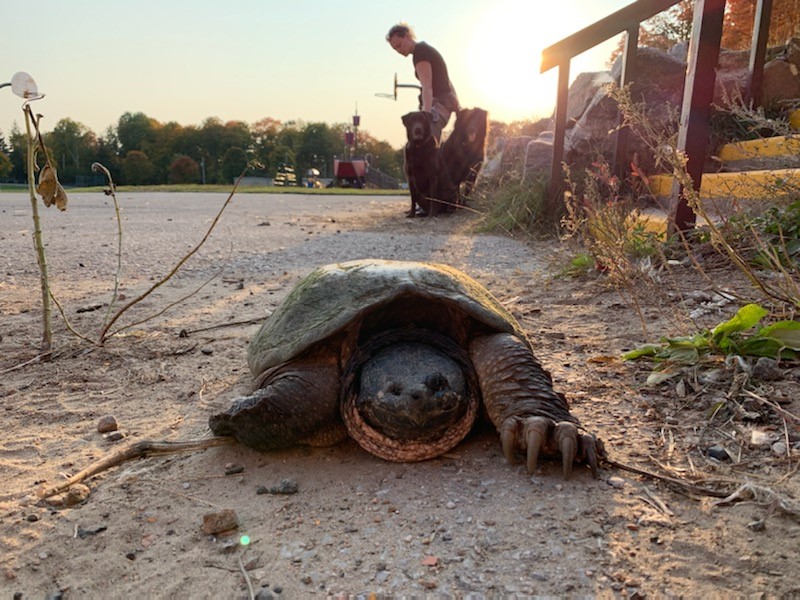
There are so many things Grace and her kin offer to Ontario. As they move around their territories, turtles transfer seeds between upland and lowland, wetland and dry land, creating new habitats for 70 per cent of Ontario’s fish and wildlife. Turtles also clean the bottom of lakes by eating pathogens, waste, debris, dead animals and more. Their deep, steady movement creates reservoirs in wetlands suffering drought conditions, which is essential to protecting tadpoles, small fish and other animals.
“They’re great gardeners and they’re great janitors,” Berman said. “There are very few animals that can do what a turtle can.” Turtles are also loyal to their hibernation sites: after making a mental map of their territories when they are very young, they walk the same path from their nest to their hibernation spot for their whole life, and never deviate — which is probably why Berman saw Grace headed back onto Gelert Road that spring.
Because of rapid human population growth and development, there are few strongholds or refuge areas left for turtles in Ontario. Grace’s life, and the survival of all eight turtle species in Ontario — from the endangered Blanding’s Turtle, also known as Ontario’s smiling turtle, to the green-and-bright-yellow painted turtle — is under constant threat from bulldozers and drivers.
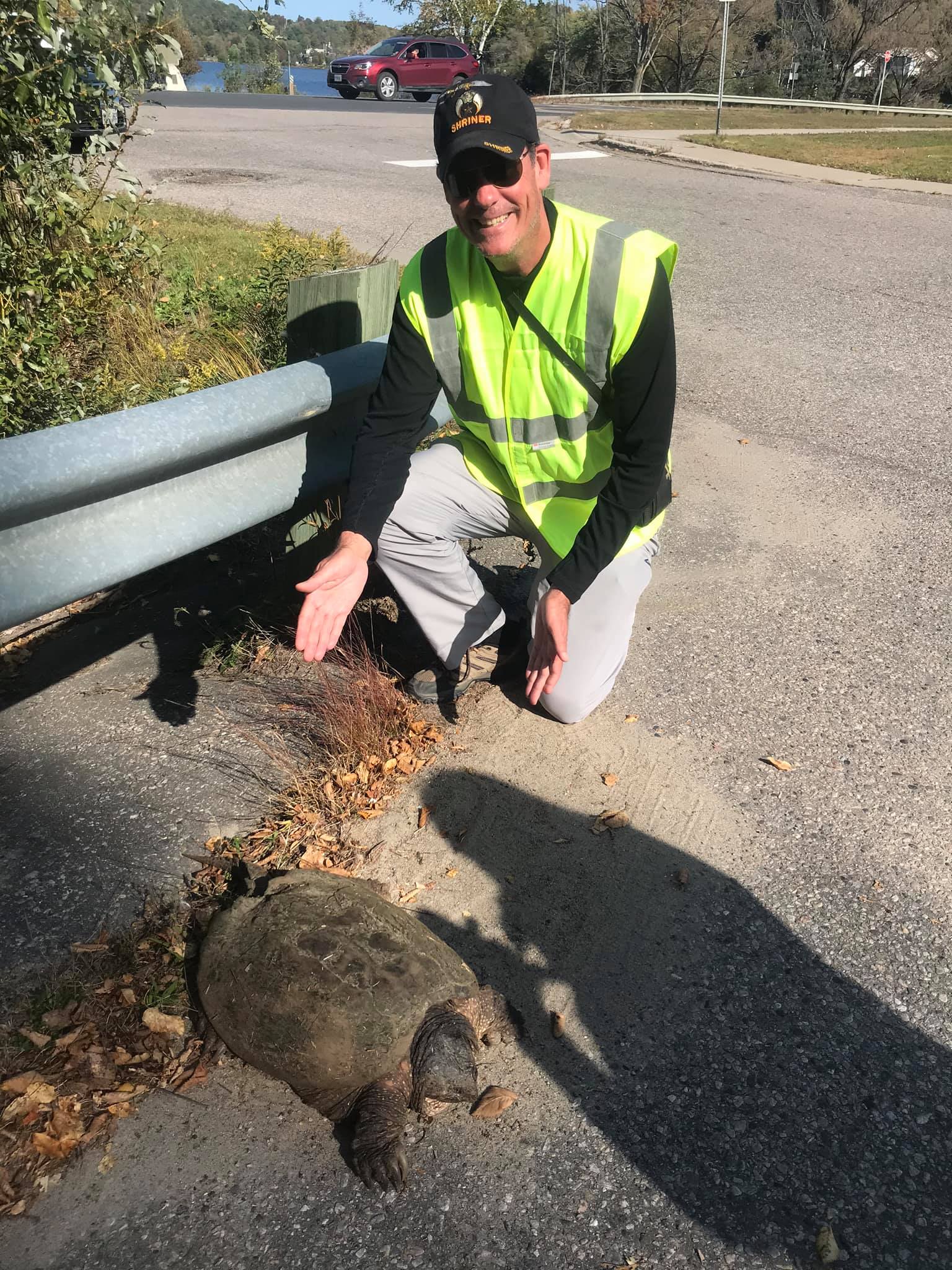
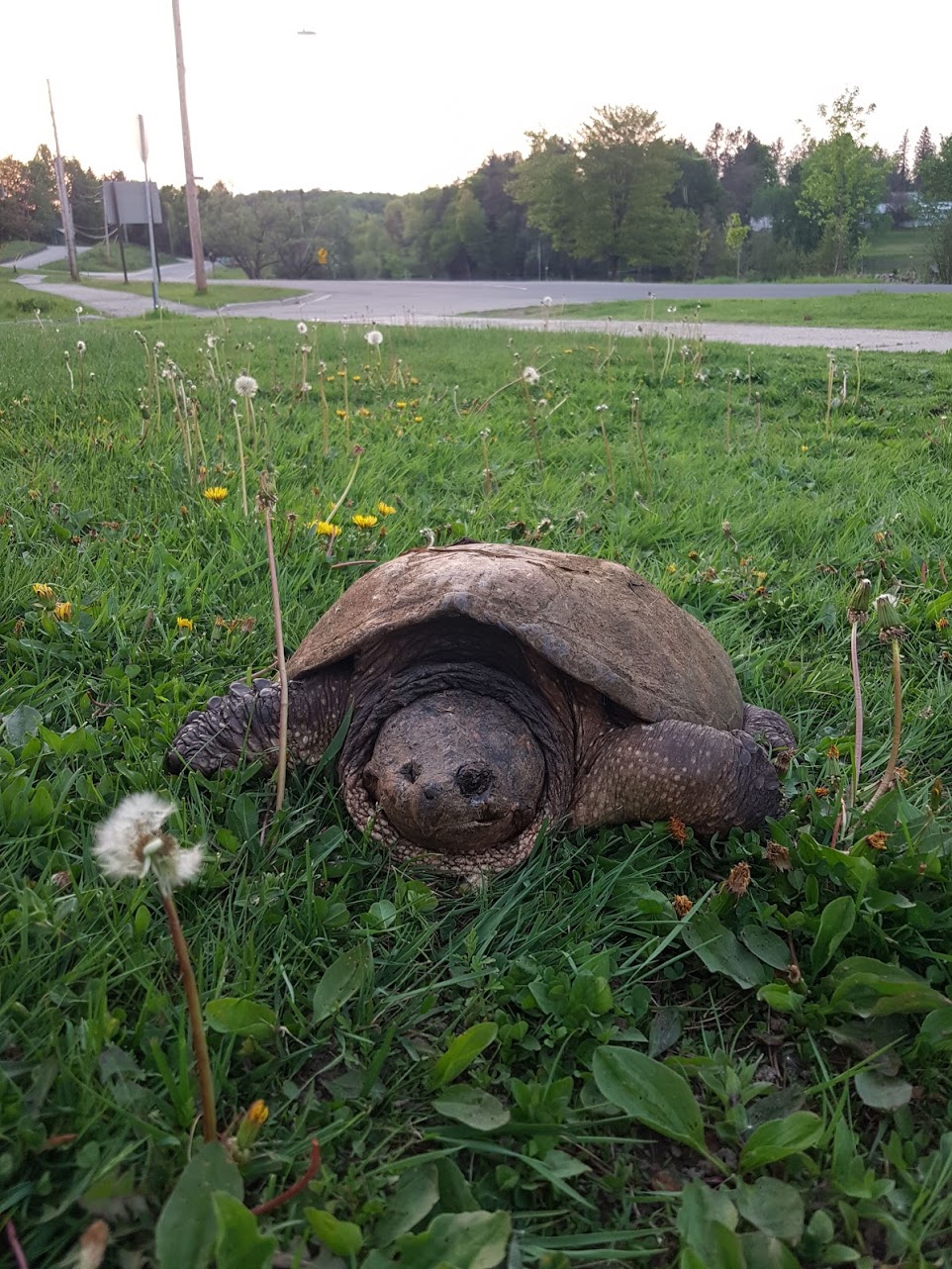

Turtle species are declining at record rates. While it is difficult to know the exact population size across the province, estimates based on the rapidly declining sizes of wetlands and the number of injured and dead turtles reported suggest the species has decreased by more than 50 per cent in the last 20 years alone. Berman says that estimate is likely on the lower end because “we have lost more than 75 per cent of wetlands in southern Ontario that corresponded to the main ranges for Ontario’s turtles.”
The problem is that they’re not living long enough to lay eggs and sustain their populations. Turtles take 50 to 60 years to reach sexual maturity, find a partner to breed with and lay at least one egg that will grow to adulthood, which seems like a long time to humans, but isn’t for a species that can live over 400 years.
“Turtles have a life strategy that has served them very well since the ages of dinosaurs,” says Jeff Hathaway, founder of Scales Nature Park, a nature centre in the township of Oro-Medonte that is focused on Canadian reptile and amphibian conservation. “Their strategy is basically to live practically forever and not care too much.”
There are no predators that feast on adult turtles like Grace. The older they get, the more eggs they lay. In theory, she could live another century or more, all the while having babies and sustaining the snapping turtle population. But in reality, it’s a miracle that she hasn’t yet been hit by a car.
Veterinarian Sue Carstairs, executive and medical director of the Ontario Turtle Conservation Centre in Peterborough, said turtles can’t go more than two kilometres in this bio-region without running into a road. On average, she sees about 1,500 turtles admitted to her hospital every year, 90 per cent of which are hit by drivers. “That’s a fraction of what gets killed,” she said. The hospital tries to heal and release as many as possible; any females that do not survive have their eggs collected and incubated.
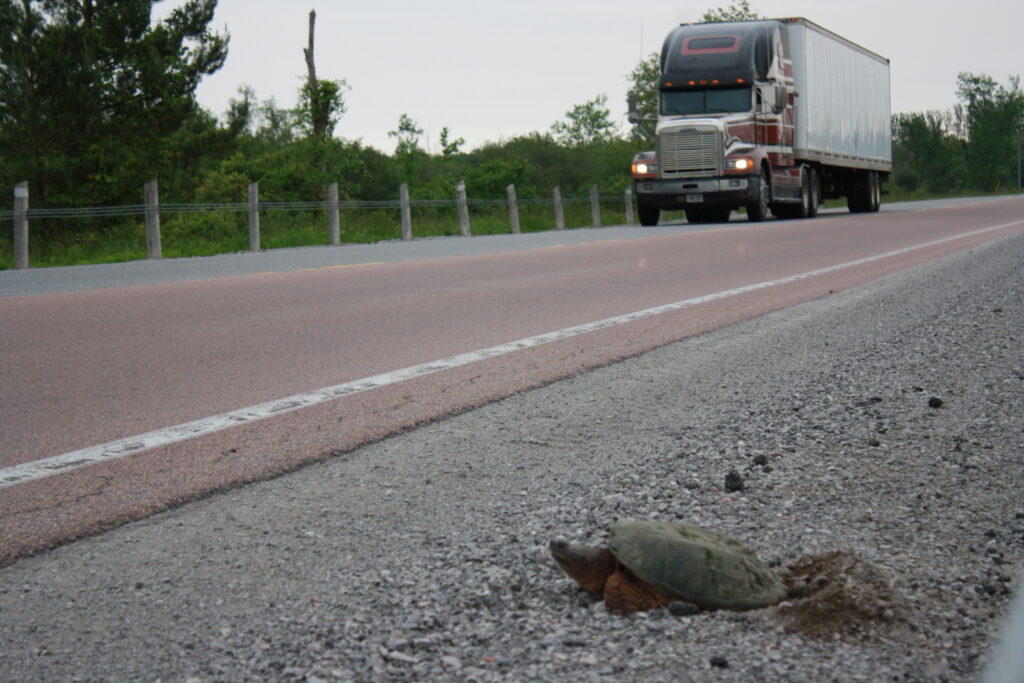
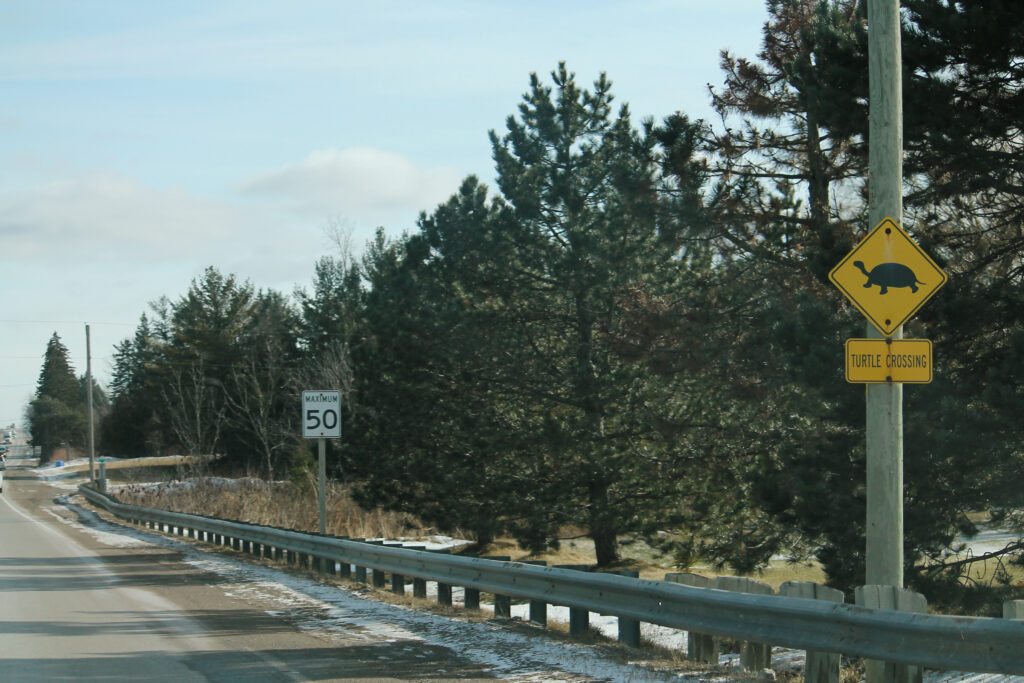
Habitat loss is another serious problem. Hathaway said some Ontario turtle species are so rare that people have never heard of them, like the wood turtle, identified by its orange-ish skin. He remembers when turtles used to live in the Greater Toronto Area; now they have been squeezed into small parts of southwestern Ontario, as cities sprawl out into what’s left of wetlands. He’d like to see positive incentives for landowners that protect endangered species and get more staff to watch for turtles around roads.
Officially, all eight turtle species are designated as various levels of species-at-risk (either endangered, threatened or of special concern) under both federal and provincial law. But the reality is that these laws don’t always protect their habitats from human activity or climate change.
In November 2021, the Auditor-General of Ontario released a series of scathing reports that found that since 2009, development approvals to projects that would harm endangered species had increased by 6,262 per cent. Most development applications were granted “automatically” and none had been denied because of a possible effect to an at-risk species.
The auditor-general focused specifically on the impact of development on the Blanding’s turtle. The environment ministry has reported that the species has declined by more than 60 per cent over the last three generations, or 120 years, because of ongoing habitat loss, and will further decline by 50 per cent over the next three generations due to road mortality alone. The Auditor General found that the few government attempts to bolster their population, such as building ponds or other small new habitats, did not succeed. Turtles are creatures of habit, remember: the Blanding’s turtles didn’t move, they lost their habitat, and their population decline has not reversed.
Herpetologists across Ontario say the story is the same for most if not all turtle species, and that the provincial environment ministry does not have the capacity to either monitor turtles or enforce protections for them.
“It’s going to be impossible to reverse this trend unless every single person is a turtle hero,” Berman said.
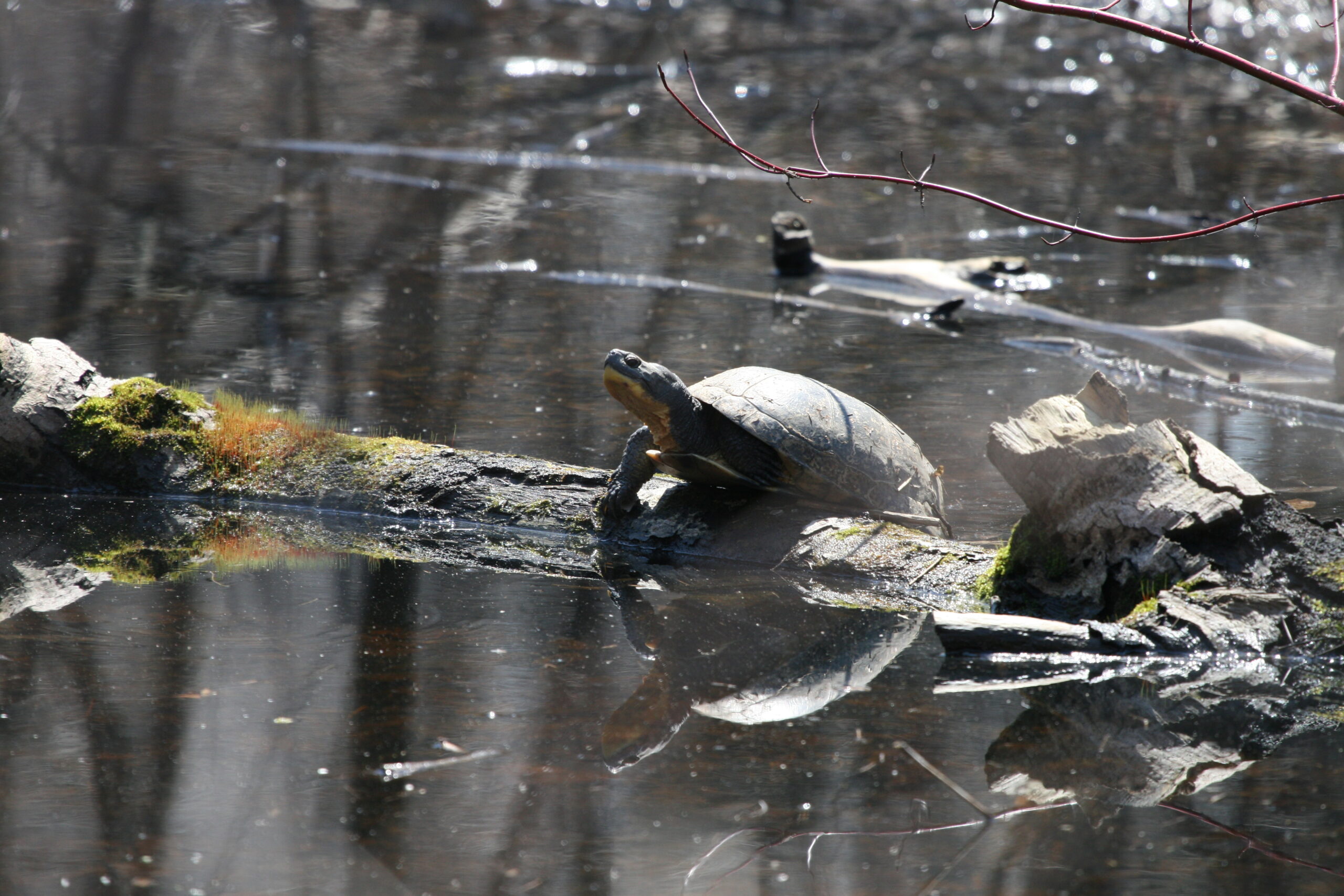
Since coming into power in 2018, the Doug Ford government in particular has watered down wetland protections and loosened development permit processes, putting turtle habitats at greater risk. The government’s 2018 changes to the Endangered Species Act empowers the Minister of Natural Resources to suspend protections for species-at-risk for any development project.
The government also created a “pay to slay” fund, officially known as the Species at Risk Conservation Trust. Under the new legislation, the province considers the overall condition of a species around the world, not just in Ontario. For example, while the Blanding’s turtle is endangered in Ontario, its population is steady in Nebraska, so the legislation would remove any protections offered to the species here. Instead, developers are allowed to destroy key habitats if they pay fees, which are meant to be used to help the species recover elsewhere — a framework that ignores how animals move across various regions.
In December, Berman was walking past Grace’s home and saw the wetland being filled with earth and rocks to prepare it for development. She stopped and reminded the landowner that Grace could be hibernating anywhere and that the land was environmentally protected under provincial legislation. A few weeks later, she called the provincial environment ministry about it. To her surprise, Ontario Environment Minister David Piccini called her office a day later to discuss Grace and all the other species that were at risk if this wetland were to be filled.
Piccini told The Narwhal he called The Land Between after receiving a message from the group on Instagram and doing a quick internet search of the organization. “I had a really nice chat with a gal named Grace who works there, not to be confused as the turtle,” he said. After the call, Piccini said he asked the ministry’s district office to “trust but verify” the situation.
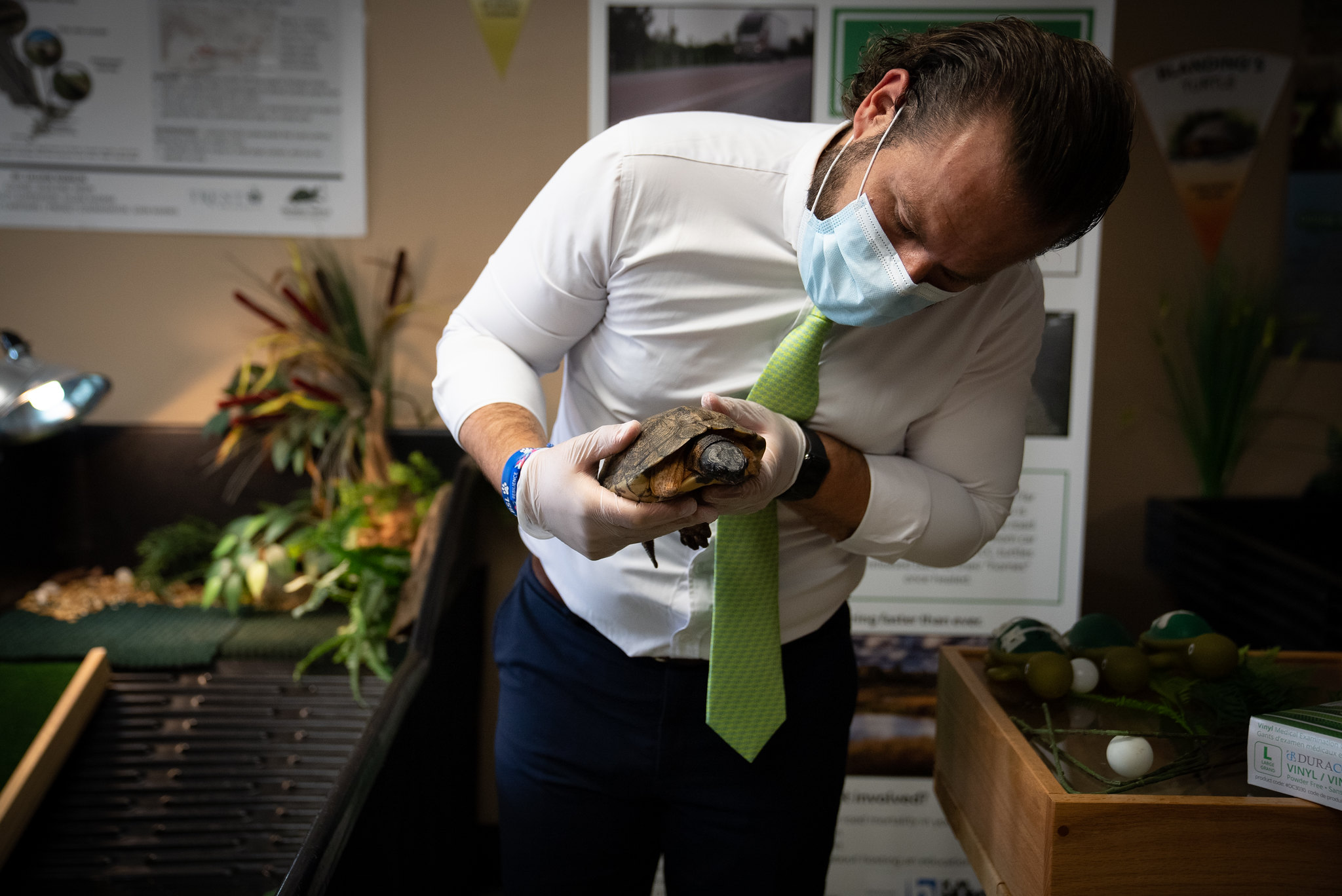
“I’m pleased to say the property owner has agreed to stop the fill,” Piccini said, adding that the environment ministry asked the owner to conduct a habitat assessment and is awaiting the results. “I look forward to the results as soon as we get it but I think the goal and objective here was, in the face of literally a fill in, we had to stop this. So we did.”
Piccini added that he was “proud” of the work the government was doing to protect wetlands and endangered species, citing the work of two committees that monitor the tensions between species protections and development. Committee members are appointed by the government: last November’s auditor general report found that 10 of the 15 members of the Species at Risk Program Advisory Committee work for land, building, forestry and agricultural industry associations or companies, while half are registered lobbyists. The remaining few are species and wildlife experts.
Piccini argues leaving developers or forestry executives out of the conversation would result in a “scattered, haphazard approach” to species protections. “My mandate letter says, above all else, to protect the well-being of our endangered species in the province of Ontario,” he said. “I am cognizant that we need programs that are systemic and take a holistic look at the entire watershed and ecosystems.”
Berman is waiting to hear back from the ministry about concrete actions to protect Grace’s home. In the meantime, a protest was held last week to demand both the province and municipality ensure the removal of the fill she saw being put down and enforce better long-term protections.
Andrea Olive, an associate professor of political science and geography at the University of Toronto whose expertise is species at risk, said efforts like Berman’s are sometimes the only reason the public finds out about endangered species.
“When you have a government that doesn’t want to enforce the law and doesn’t want to empower people to actually implement and enforce it, then we just have well-meaning citizens,” she said. Since the Ford government slashed the environment ministry’s budget by a third, there are fewer staff inspectors and enforcers on the ground.
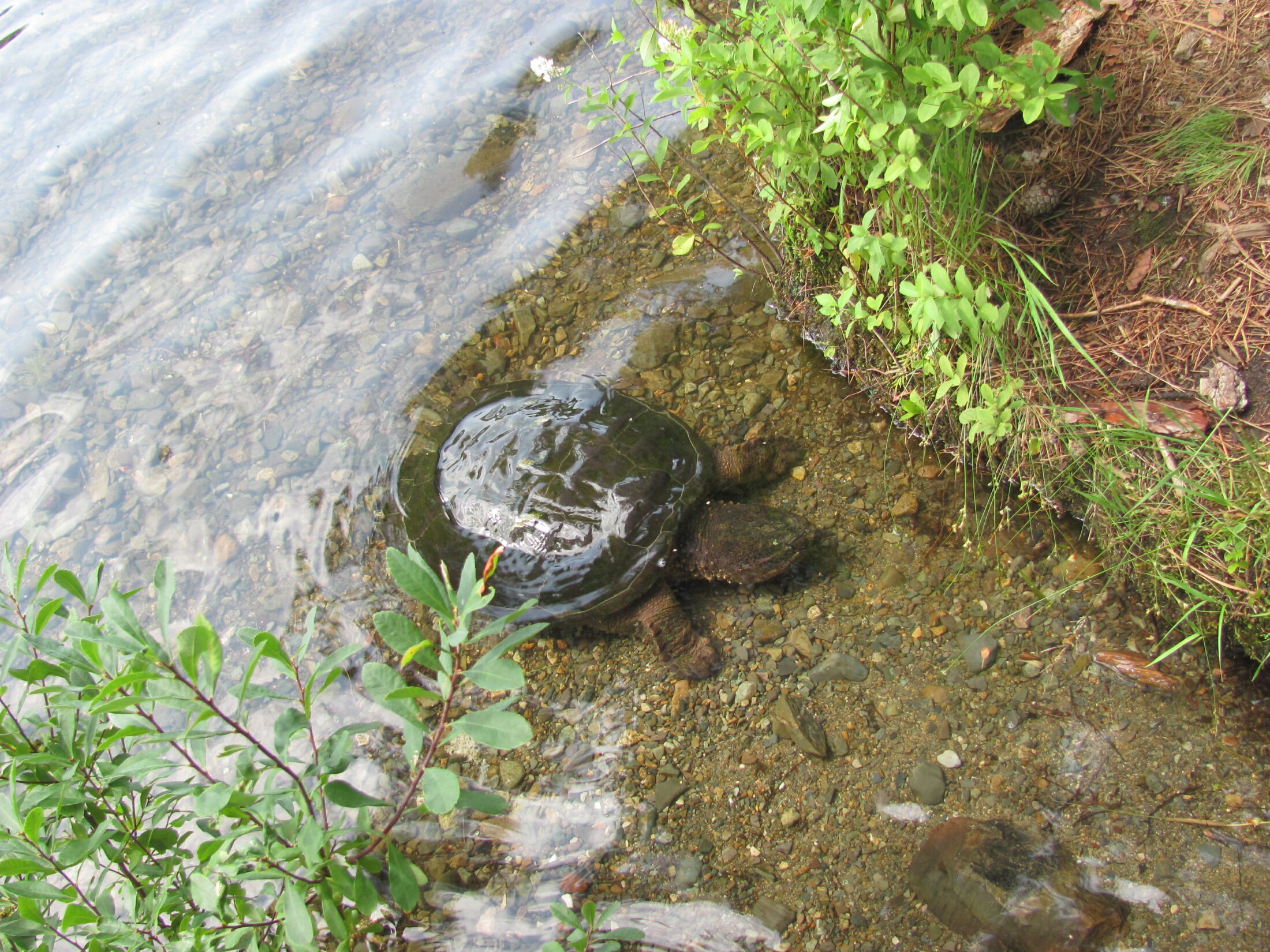
“[Citizens are] doing the best that they can and, frankly, they’re all we got because we can’t rely on the government,” Olive said. “Ontario’s habitat is important to turtles. I think people like turtles and find them cute but I also get the impression that people don’t really care about running them over. If we can just get people to understand why turtles are important and want to keep turtles in the world, I think we could do more.”
The silver lining is that Dr. Carstairs is seeing an increasing number of turtle guardian groups emerge across Ontario, from Brampton to Bancroft to Ottawa. They’re partnering with scientists to educate communities about turtle conservation campaigns that could have “great influence,” she said.
In January, Berman started a fundraising campaign to help bolster her organization’s efforts to protect Grace and other turtles. She wants to train more volunteers to monitor roads and nest sites, a process that takes a lot of time. Then there are all the permits she needs to apply for and be granted: permission for research, and for protective measures such fencing, mapping and road signs. Berman wants to put billboards up asking cottage-goers to be more mindful of their reptile co-habitants. So far, she’s raised almost $4,000 of a $10,000 goal.
Meanwhile, Berman and other turtle guardians are eagerly waiting for spring to meet Grace and many other turtles again. She existed before there was even a treaty or law guaranteeing her protection. Her land is so much smaller now, but hopefully, she’s still out there.
Updated on Feb. 8, 2022 at 12:47 p.m. ET: This story was updated to clarify a statement by Environment Minister David Piccini, who stopped a “fill-in” of wetland, not a “felon.” There is also a correction to an earlier statement made by the minister: it is the property owner, not the ministry, that is conducting a habitat assessment.
Enbridge Gas will face Waterloo Region in a hearing before the Ontario Energy Board to renew an agreement that would allow the company to continue...
Continue reading
For 15 years and counting, my commute from Mississauga to Toronto has been mired by...

For our last weekly newsletter of the year, we wanted to share some highlights from...

The fossil fuel giant says its agreement to build pipelines without paying for the right...